REFORM
2024 LEGISLATIVE SESSION INSURANCE REFORMS
JEFF ALBRIGHT

BOOTCAMP
PRODUCER BOOCAMP: TOTAL PRODUCER TRANSFORMATION STARTS HERE DUSTIN WAMBSGANS
DATA
DATA AUTONOMY: HOW INDEPENDENT AGENCIES CAN ACHIEVE TECHNOLOGY INDEPENDENCE RACHEL STAUFFER
FEBRUARY 2024
L O U I S I A N A A G E N T

IIABL STAFF
Benjamin Albright
Chief Executive Officer, President balbright@iiabl.com (225) 236-1357
Jeff Albright
Consultant
jalbright@iiabl.com (225) 236-1366
Karen Kuylen
Director of Accounting & Finance kkuylen@iiabl.com (225) 236-1353
Jamie Newchurch
Director of Insurance Programs jnewchurch@iiabl.com (225) 236-1350
Kathleen O'Regan
Director of Communications & Events koregan@iiabl.com (225) 236-1360
Karson Roberts
Communications & Events Administrator kroberts@iiabl.com
(225) 236-1351
Lyra Roberts
E&O Administrator
lyra.roberts@iiaba.net (225) 236-1352
Dustin Wambsgans
Agency Consultant
dwambsgans@iiabl.com
(225) 236-1361

page 3
LOUISIANAAGENT



06 Producer Bootcamp: Total Producer Transformation Starts Here 10 FEATURED ARTICLES TABLE OF 2024 Legislative Session Insurance Reforms FEATURED ARTICLES Staff Spotlight: Lyra Roberts 13 Dive into the Artificial Intelligence Ocean 19 23 CONTENTS PAGE 4 LOUISIANAAGENT 18153 E Petroleum Drive Baton Rouge, LA 70809 Ph: (225) 819-8007 www.iiabl.com Data Autonomy: How Independent Agencies Can Achieve Technology Independence 6 Steps to Implementing Automation 18

2024 Legislative Session Insurance Reforms

 JEFF ALBRIGHT IIABL CONSULTANT
JEFF ALBRIGHT IIABL CONSULTANT
The reasons for the insurance crisis in Louisiana are multifaceted and include legislative, regulatory, and litigation environments that collectively contribute to insurers' lack of profitability in the state:
1. Legislative Environment: The state's legislative environment imposes various statutory restrictions on insurers, which include:
Prior approval rate regulation, which controls how insurance rates are determined and implemented.
Bad faith penalties and stringent requirements for "satisfactory proof of loss," which put significant pressure on insurers during claims processes and results in excessive litigation.
Restrictions on claims handling procedures, nonrenewals, and cancellations, limiting insurers' flexibility in managing policies and risks.
Claimant-friendly benefit and tort statutes, which increase insurers' liability and costs.
2. Regulatory Environment: The regulatory landscape in Louisiana is also challenging for insurers due to:
An elected insurance commissioner, which can introduce political considerations into regulatory decisions.
Suppression of rates in the approval process, preventing insurers from setting rates that accurately reflect the risk.
Excessive regulation of insurers, which increases operational costs and complexities.
A regulatory focus that is more disciplinary than facilitative, creating an adversarial rather than a supportive environment for insurers.
3. Litigation Environment: The litigation environment in Louisiana further exacerbates the insurance crisis by:
High frequency and severity of tort claims, leading to increased costs for insurers.
Expansion of tort into property claims, blurring the lines between different types of insurance claims and leading to higher payouts.
Social inflation, where societal trends lead to higher insurance claims and lawsuits.
Plaintiff-friendly legal venues and elected judges, which can lead to biased or unfair judgments against insurers.
Aggressive legal advertising, which encourages more claims and lawsuits against insurers.
INSURANCEREFORM
Continued from page 6
These factors combine to create a challenging environment for insurers, causing many insurers not to do business in Louisiana, resulting in a crisis of availability and affordability of insurance in Louisiana.
Following are details of the proposed 2024 Insurance Reform Legislation to address Louisiana's insurance crisis:
1. Fair Claims Handling and Proof of Loss: Maintain bad faith penalties for insurers acting in bad faith while clarifying fair claims handling practices for policyholders This aims to define clearly the proof of loss requirements and triggers for bad faith claims to minimize unnecessary litigation
2. Modify the "More Than 3-Year Rule": Propose changes to allow sunset statutes for policies written after a certain date, individual policy deductible changes, and permit 2%-3% of policies in each parish to be nonrenewed, aiming for more flexibility and better risk management
3. Reform Medical Cost Collateral Source and Transparency: This reform aims to allow only recovery of medical expenses that have been paid or are obligated to be paid by the client, not the billed amounts It would also use reversionary trusts for future medical expenses to ensure they are used solely for that purpose
4. Third-Party Litigation Funding: Require disclosure of third-party litigation funding to prevent influence on litigation and settlement decisions by funding sources, aiming to reduce the impact of external financial interests on legal proceedings.
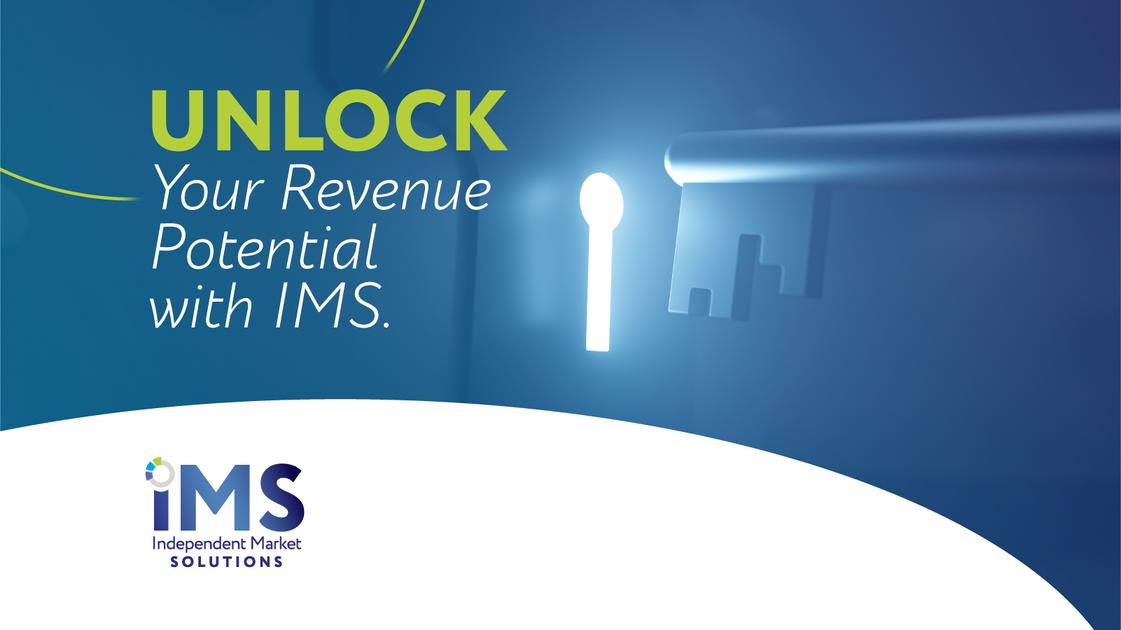
PAGE 7
LOUISIANAAGENT
Continued from page 7
INSURANCEREFORM
5. Reduction of Direct Actions Against Insurers: Limit the routine naming of insurers as plaintiffs in lawsuits with certain necessary exceptions, aiming to reduce direct legal actions against insurance companies.
6. Permits and Inspections for Reroofs: This includes a proposal that re-roofing, like new construction, should require permits and inspections. This measure aims to protect policyholders from predatory practices following storms and to provide better underwriting data for insurers.
7. Change Insurer Rate Filing Process: Change rate approval statutes from a "prior approval" system to a "file and use" system to speed up the rate filing process and potentially encourage more insurers to operate in the state.
8. Building Resilience: Encourage the construction of more resilient buildings, maintain and enforce strong building codes, extend the Fortified Homes Grant Program, and create a funding source for these initiatives to reduce loss costs and make the state more attractive to insurers.
These reforms are aimed at addressing the insurance availability and affordability crisis in Louisiana by reducing loss costs and attracting new insurers to the market.

LOUISIANAAGENT PAGE 8

Producer Bootcamp: Total Producer Transformation Starts Here


As the proud instructor of the Producer Boot Camp, I am thrilled to share the incredible journey that awaits our participants in this transformative sales training program. This is not just a course; it's an immersive experience designed to propel independent insurance agency producers toward excellence.
A Comprehensive Learning Path: Our program is meticulously crafted to empower producers with a diverse set of skills. From honing sales techniques to mastering proven prospecting processes, understanding customer development techniques, fostering professional growth, and igniting the fire of motivation for unparalleled success Producer Boot Camp covers it all.
Six Weeks of Intensive Training: Webinars are the backbone of our program, with one engaging hour each week over a span of six weeks. These sessions are not just lectures; they are interactive, fostering discussions about real-world challenges in the industry. But the learning doesn't stop there. Producers are encouraged to apply their knowledge with practical homework assignments between each session, ensuring immediate real-world application.
The Heart of Interaction: What sets Producer Boot Camp apart is its interactive nature. We delve deep into the sales processes of our participants. We discuss the hurdles they face, explore what works, and address what doesn't. This isn't a one-size-fits-all approach; it's a personalized journey tailored to the unique needs of each producer. Role-playing exercises form a crucial part of our methodology, allowing participants to refine their skills in a safe and supportive environment.
Pushing Beyond Comfort Zones: Comfort zones are where growth stalls. That's why Producer Boot Camp is designed to take producers out of their comfort zones. We challenge them to reach new heights and become the best versions of themselves. The journey isn't always easy, but it is undeniably rewarding for the individuals and the agencies they represent.
DUSTIN WAMBSGANS IIABL AGENCY CONSULTANT
Continued from page 10
PRODUCERBOOTCAMP
A Collective Benefit: The ultimate goal of the Boot Camp extends beyond individual success. As participants transform into more effective and motivated professionals, the ripple effect is felt throughout their agencies. The success of each producer contributes to the overall success of the team and the agency as a whole.
In the months following the Producer Bootcamp, our goal is that you see remarkable improvement in your agency's performance metrics. From increased client acquisition to higher retention rates, the impact can be tangible. We hope that the producers that experience this series not only become more confident in their roles but also cultivate a proactive and innovative mindset that positively influences their agency's bottom line.
If your agency is seeking a comprehensive and effective sales training program, Producer Bootcamp is for you. The investment in your team's development has the potential to pay off exponentially, and we are excited about the continued success that lies ahead.
I invite you to join us on this exciting journey at Producer Boot Camp. Together, let's unlock potential, overcome challenges, and achieve unprecedented success in the dynamic world of insurance sales.

LOUISIANAAGENT PAGE 11
Register
Today!
PRODUCER BOOTCAMP
May
May
May
May
June





Total Producer Transformation Starts Here REGISTER NOW! www.iianc.com/producerbootcamp SECOND TO NONE Our instructors are Individual Registration May - June 2024 Week 1: Becoming Your Best Version & Activities vs. Results
7 Week 2: Producers' Perfect Schedule
14 Week 3: Exit Barriers
21 Week 4: Differentiate to Dominate
28 Week 5: Professional vs. Amateur
4 Week 6: Overcoming Resistance Powered by: IIABL Agency Consultant IIANC Director of Agency Development DUSTIN WAMBSGANS Format Transformative Experience Who Should Register? What You’ll Gain June 11 Pre-register by April 30 to secure your seat! 6-week webinar series 1 hour/week interactive sessions Real-world homework for practical application Discussions on sales processes and challenges Role-playing exercises to enhance skills The Producer Bootcamp is not just a a program; it’s a journey of selfdiscovery and professional growth We believe in pushing boundaries and taking you out of your comfort zone to be the best version of yourself - for your benefit and the benefit of your agency Masterful sales skills Proven prospecting processes Effective customer development techniques Professional development insights Motivation for unparalleled success This program is suitable for individuals at various stages of their careers Whether you are a well seasoned producer or a new producer, our program is intended to engage participants actively in their learning process to help sharpen your skills and stay competitive Spring Session: Registration Fees: $1,200 per person JASON SABO
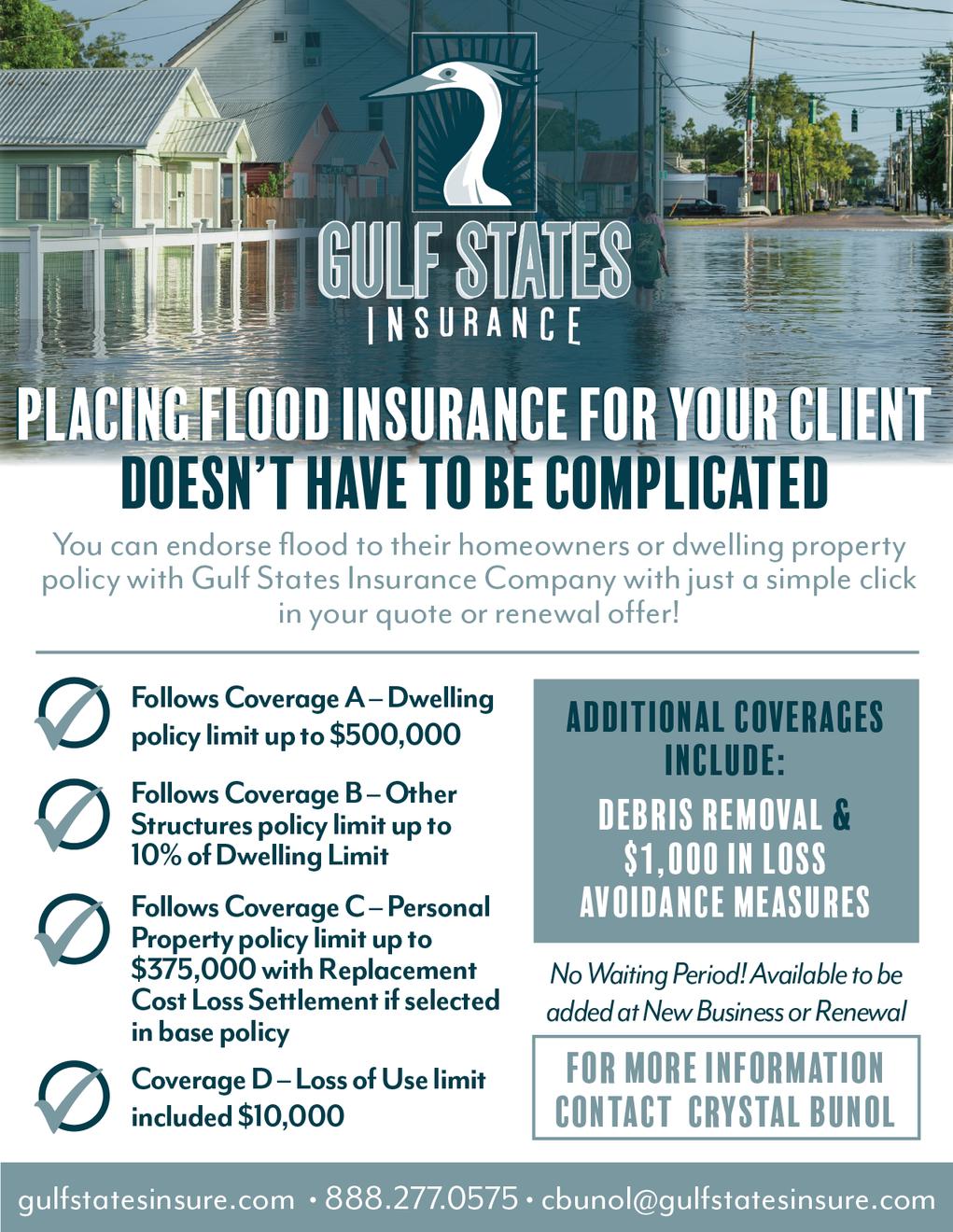
Data Autonomy: How Independent Agencies Can Achieve Technology Independence
 RACHEL STAUFFER HAWKSOFT CONTENT MANAGER
RACHEL STAUFFER HAWKSOFT CONTENT MANAGER

Independent insurance agencies offer their clients the freedom to choose the best policy for their needs, irrespective of carrier. But is your agency following that same principle with your tech stack?
In this digital age, client and policy data is one of an agency's most valuable assets, and maintaining the agency's ownership and autonomy over that data independent of the systems it resides in is paramount. For an agency to truly function independently, you should have the ability to utilize your agency's data whenever and wherever you need it.
How can you proactively maintain ownership and control over your agency's data? Here are three steps every agency should take to advocate for and safeguard their agency's data autonomy.
1) Establish data ownership agreements with technology providers. In the insurance industry, client data passes through many different systems that are used by the client, agency, carrier and technology providers. Subsequently, which party claims ownership of that data is often murky. It's up to the agency to advocate for the ownership and control of its data in the agreements signed with technology providers, including agency management systems and any other systems client data passes through. Most providers require agencies to either sign a contract or licensing agreement, or accept their terms and conditions to use their product. A lot can be hidden in that fine print, and agencies often don't realize they're sharing or even signing away control of their data to the technology provider. Before accepting any agreement with a provider, establish whether the vendor is entitled to share, sell or otherwise use your agency's data without your consent. If the contract language is unclear or doesn't mention data ownership, it could be a red flag that the provider isn't willing to recognize the agency as the data's owner. Ask the provider for clarification in writing before accepting an agreement. If the vendor's views on data ownership don't mesh with yours, you may want to take your business elsewhere. Also, examine technology providers and choose one you trust. Consider who owns or has a stake in the company, and what their motivations could be. If the company has outside investors or has changed ownership recently or many times in the past, the scope of the product and the agreement may change in the future as well.
DATAAUTONOMY
Continued from page 14
“It's important for your agency to feel comfortable that you can place your trust in a vendor not only at the moment you sign the agreement but well into the future," says Rushang Shah, chief marketing officer at HawkSoft. “Technology providers that are committed to remaining privately owned wield the advantage of having fewer stakeholders to answer to besides the agent. They can focus purely on what's best for the agent rather than making a quick return on investment."
Questions to ask include:
Does the contract stipulate whether the data you enter into the system can be shared, sold or otherwise used by the provider or other parties?
Do you trust the owner of the company and know the parties that have stakes in it?
What is the likelihood of the company changing ownership in the future?
2) Ensure your data isn't siloed in a single system. True data independence means your data isn't trapped in one system you should be free to change systems if necessary for your business. But technology providers often make it difficult for agencies to leave by locking them into long-term contracts and making it costly and time-consuming for them to get a copy of their own data, often charging thousands of dollars in data extraction fees and taking months to provide the agency with a copy of their own data when they leave. Don't be seduced by vendors that seem to have incredibly low rates but hit agencies with unreasonably high charges to move their data into or out of the system. “Agencies are sometimes blinded by a low introductory offer for a management system," says Paul Moyes, HawkSoft's vice president of sales. “What they may not be taking into account is how costly that decision can become when they are bringing data with them or when they want to change systems down the road."

LOUISIANAAGENT PAGE 15
DATAAUTONOMY
Continued from page 15
To understand termination requirements and fees, questions to ask include:
Does the agreement specify a minimum term of use?
How much notice are you required to give before leaving the vendor?
Can you retrieve a copy of your data from the system at any time?
Ben Albright
How much does the vendor charge for providing a copy of your data if you leave, and how quickly will they provide it?
December 2023
If you want to move your data, what format is the data provided in, and is it easy to manipulate or convert to another system?
If you are bringing past data to a new vendor, how much will they charge to convert the data to their system, and how long will it take?
3) Build an integrated tech stack where data can move freely between systems. Another important tenet of data autonomy is the ability to connect your client data to all the different systems that help you run your business, whether it's marketing automation, review management, raters or other tools. One of the best ways technology providers facilitate access to client data for other platforms is through application programming interface (API) integration. Platforms that offer API integration with a variety of systems demonstrate that they are committed to meeting all the needs of an agency not just the ones solved by their product. Agency management systems are built to be the best at policy management not necessarily the best at email marketing or payment processing or other tasks that are also important to an agency. Rather than trying to find one comprehensive system that “has it all," focus on platforms that specialize in what they do best and integrate with other systems that are experts in their own spaces.
This approach allows you to extend and customize your tech stack in the way that works best for your agency and it gives you a best-in-class experience in each area. It also offers the flexibility to choose the integrations that are most important for your agency, so you can scale your business as your needs evolve instead of paying for a glut of features you don't use. Rather than being constrained by the features or limits of a single system, you can simply add or remove tools to your integrated technology ecosystem.

PAGE 16
LOUISIANAAGENT
DATAAUTONOMY
Continued from page 16
This approach allows you to extend and customize your tech stack in the way that works best for your agency and it gives you a best-in-class experience in each area. It also offers the flexibility to choose the integrations that are most important for your agency, so you can scale your business as your needs evolve instead of paying for a glut of features you don't use. Rather than being constrained by the features or limits of a single system, you can simply add or remove tools to your integrated technology ecosystem.
When considering the integrations offered by a management system, see whether the provider offers multiple integration choices in each category. This ensures you can change integration partners down the road if needed. Don't like the way emails look in one marketing automation solution? Simply plug in a different one. Freedom of choice lets you tailor your technology to fit your agency not the other way around
Keep in mind that the quality of a vendor's API partners is just as important as the quantity they offer since the partners will be accessing your data if enabled. Look for providers who thoroughly vet their partners and hold them to data practices that are fair to the agency.
“The single most important aspect of my job is ensuring we partner with vendors we can trust, who are committed to respecting an agency's ownership of their data as much as we do," says Kenny Hendricks, director of partner integrations at HawkSoft. “Agencies should take the same care in vetting vendors themselves."
Questions to ask:
Does the vendor offer API integrations or other data connection methods with other systems? How many integration partners are available? And are they the systems your agency uses or would like to use in the future?
Does the vendor continue to add new integration partners on a regular basis?
Does the vendor vet its integration partners to ensure quality integration and hold partners to fair data practices?
Do the integration partners have clear language about the ownership and use of your data?
Making data autonomy a reality for your agency requires advocacy and careful consideration when choosing technology partners Partner with technology providers and integrated systems that recognize and respect the ownership of agency data, allow you to customize and scale your technology stack, and facilitate the utilization of your data in the way that's best for your agency

LOUISIANAAGENT PAGE 17

Staff Spotlight: Lyra Roberts
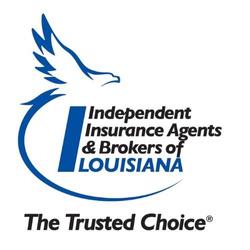
We're thrilled to welcome Lyra Roberts to our team as the new E&O Program Manager. With an impressive 19 years of experience in the insurance industry, including roles as a Territory Manager and Agency E&O Program lead, Lyra brings a wealth of knowledge and expertise to her position.

In her role, Lyra is dedicated to securing competitive E&O, cyber, and umbrella coverage for our agents. She's committed to providing each member with the same level of attention and commitment they give their clients, ensuring a seamless and positive customer experience.
Joining the IIABL team is an exciting prospect for Lyra, particularly the opportunity to forge strong relationships with our agents. She looks forward to getting to know them better and forming connections that extend beyond the professional realm.
One of the most rewarding aspects of Lyra's job is helping agencies protect their businesses their most valuable asset. She places great value on building personal connections with our agents and is eager to establish strong relationships within our community.
Lyra's approach to productivity is grounded in organization, relying on checklists and meticulous documentation to stay focused and efficient. She firmly believes in IIABL's mission to serve members and enhance agency performance, advocating for the industry on both state and national levels.
Beyond her professional achievements, Lyra has a rich personal life. She is a proud graduate of the University of Oklahoma Big I and a loving parent to three children two sons and one daughter. And when it comes to indulging in a sweet treat, Lyra's weakness lies in Chocolate Almond ice cream an exquisite blend of flavors to match her multifaceted personality.
As Lyra embarks on this new chapter with us, her dedication, professionalism, and personal warmth enrich our team dynamic. We look forward to witnessing her contributions as she navigates the exciting realms of insurance and builds lasting connections within our community. Join us in welcoming Lyra Roberts to the IIABL family!
6 Steps to Implementing Automation
 MARTINA SEFEROVIC OIP CEO
MARTINA SEFEROVIC OIP CEO
Demand for business automation has incre
by Salesforce and Vanson Bourne. Meanwh market grew 19.5% in 2022 compared to 2021 and was anticipated to finish 2023 with 17.5% growth, according to an August 2023 analysis from Gartner. By 2025, 70% of organizations will implement full automation in infrastructure and operations, an increase from 20% in 2021.

In the coming years, the combination of artificial intelligence (AI) and RPA is set to play a pivotal role in transforming the insurance industry. As these technologies continue to advance and gain broader acceptance, companies that strategically embrace and implement them are likely to gain a competitive advantage in the market.
However, the road to automation is paved with challenges and complexities that require careful planning and analysis. While the promise of increased efficiency and streamlined process beckons, successful implementation hinges on a number of factors.
A critical step in the transformative journey to automation is business process optimization but it is often underestimated. Why? Many organizations are eager to embark on digital transformation and fail to prioritize the audit and optimization of business processes. Often, this is due to the allure of quick fixes and immediate gains that automation promises. When faced with pressure to improve efficiency and reduce costs rapidly, organizations jump straight into implementing automation solutions without thoroughly examining their existing workflows. The rush can lead to the automation of inefficient or outdated processes, exacerbating inefficiencies rather than resolving them.
Another reason businesses neglect process optimization is a lack of awareness or understanding of its benefits. Some organizations might view process optimization as a time-consuming and resourceintensive endeavor, not realizing the long-term advantages it offers. In pursuing automation, they may overlook the fact that optimizing existing business processes lays a solid foundation for successful automation initiatives. Without streamlining processes first, automation can become a band-aid solution that fails to address underlying issues.
Furthermore, the complexity of some business processes may deter organizations from attempting to optimize them. They perceive certain workflows as too intricate and challenging to revamp. However, automating complex processes that have not been cleared of deficiencies can lead to automation bottlenecks and fail to deliver the desired results.
AUTOMATION
Continued from page 20
For automation to be successful, it is critical to ensure the process that is going to be automated is streamlined and free of any deficiencies. The chances are that the longer the process has been around, the more inefficiencies it has.
Here are six steps to guide you through the audit process:
Step 1: Review task manuals and SOPs. Begin the audit process by reviewing existing task manuals and standard operating procedures (SOPs). These documents provide valuable insights into how processes are officially structured. However, it is important to recognize that the actual practices might differ from what is documented, as employees may make ad hoc modifications to processes over time. Being aware of potential discrepancies sets the stage for in-depth observations and understanding.
Step 2: Observe processes in action. Merely relying on documentation is insufficient to gain a holistic view of business processes. Physically engaging with the teams and observing how processes are executed in real-time provides a broader picture. This on-the-ground approach illuminates the process's nuances, identifies bottlenecks and highlights the challenges faced by employees. It also provides an opportunity to gather direct feedback from those performing the tasks, ensuring a comprehensive understanding of the process.
Step 3: Document the current state. Create a detailed record that documents the existing process as it is practiced and the ideal state the organization aims to achieve. This comparative analysis sheds light on gaps between the current and desired states, providing a roadmap for improvement. Ask a series of questions during this documentation phase: What steps are necessary? What steps can be removed or streamlined? Is there a more efficient way to achieve the desired outcomes?

LOUISIANAAGENT PAGE 21
AUTOMATION
Continued from page 21
Step 4: Benchmark against best practices. Incorporate insights from similar companies and industry best practices into the audit process. Studying and analyzing how successful organizations handle similar processes can offer valuable benchmarks for optimization. Comparing your current processes with industry-leading practices helps identify areas that require attention and enables you to adopt tried and tested methods.
Step 5: Question and analyze every step. During the audit, encourage a culture of inquiry where every step of the process is questioned and analyzed. Challenge the “we have always done it this way" narrative and identify areas where processes might be unnecessarily complex or outdated. Emphasize the need to innovate and embrace change, even if certain practices have been in place for years. This type of evaluation ensures that only the most efficient steps are retained in the optimized process.
Step 6: Involve a diverse review team. To gain comprehensive insights and perspectives, involve a diverse team of individuals from different departments. Engage those who are closely associated with the process on a daily basis, as well as others who may offer a fresh perspective. A mix of technical and non-technical staff ensures a well-rounded examination of the processes, resulting in better decisions.
Prioritizing Processes to Optimize and Automate
Decision-makers don't always have firsthand experience with the day-to-day processes within their organization. This can result in misconceptions regarding which processes are most suitable for automation.

LOUISIANAAGENT PAGE 22
AUTOMATION
For example, it is natural to be tempted to automate numerous processes at once or those that have been around the longest. However, they are usually not the best measures of automation suitability.
Before delving into the resource-demanding and costly journey of task optimization and automation, consider the following:
Is the task repetitive and involving minimal human input? When identifying processes for automation, start with tasks that are highly repetitive and involve minimal human intervention. These tasks are usually the most suitable for automation because they often follow set patterns and are prone to human error.
Is the task frequently performed? Focus on automating high-volume processes that have a significant impact on daily operations. By automating frequently performed tasks, organizations can realize substantial efficiency gains and rapid returns on their automation investments.
Is the projected benefit of automation worth the investment? Before deciding to automate a task, perform a cost-benefit analysis. Will the anticipated benefits of automation justify the investment? Calculate the potential time and cost savings, improved accuracy and increased productivity that automation can bring to the process


PAGE 23
Continued from page 22
Dive into the Artificial Intelligence Ocean


Today's agents receive many questions about today's use of artificial intelligence (AI), how our stakeholders should be thinking about it, what the concerns are, and where to consider making investments. In short, does ACT have a position on AI? A position on AI? Something so incredibly vast, powerful, scary, and relatively early in our true understanding. As a complete and total diversion, this made me think of the oceans.
The oceans are incredibly vast. Likely more so than most of us can actually comprehend. While we have been able to utilize the oceans for many good things to the benefit of society for centuries, we have explored and understand so very little about them. On one hand, oceans are a significant source of food, allow for global shipping and cultural exchanges, enable power generation, provide significant economic benefits via tourism, inspire art, writing, and song, and draw people from everywhere to take in their beauty. On the other hand, when we approach the deep, dark, and powerful ocean without caution it can wreak havoc in very small and very large ways via flooding, erosion, rogue waves at sea, the sizeable number of sea lives that cause danger to humankind, and the pure peril that comes with exploring the unknown. Additionally, most of the ocean is unexplored, misunderstood, and we are learning new things about it all the time.
In so many ways, the ocean seems to be a strong analogy for AI.
Afterall, many still largely misunderstand AI. We are all learning new things about the incredible capabilities and potential benefits to society, yet at the same time we are trying to better understand the risks. Though AI has been a part of some companies' capabilities for several years, more recently we are seeing specific examples where AI helps agents and carriers in areas such as social media and marketing content generation ideation, customer chat, contract reviews, coverage form comparisons, phone answering/customer service, minimizing duplicate entry needs, code writing, download reviews and reporting, data integration and aggregation, pricing models, fraud detection, mass process efficiency evaluation, and cat modeling. Though this list is far from allencompassing, AI is already a vast and diverse collection of ways.
CHRIS CLINE ACT EXECUTIVE DIRECTOR
AIOCEAN
AI is delivering or promising positive impacts on business and society, and we are really just getting started. On the other hand, there are some very deep rabbit holes one can explore if they really want to look at the potential downside of AI and the adverse impact it could pose on society. That conversation is for a different time and place, but there are some legitimate risks we need to mitigate and are talking about, such as E&O risk, licensing questions, fraud and misrepresentation, talent and training needs, staff redundancies, brand sincerity, data privacy, and more.
What is our position on AI? Much like the ocean, we all have a lot to learn as we explore, try new things, make mistakes, gain capabilities, and learn how to live with AI as we evolve as a society. For many, the capabilities are very new and bounce between romantic and exciting and scary and existential. For me personally, and at ACT, we tend to view the upsides as a focal point and will invest time in continuing our understanding of new capabilities and legitimate risks. We'll continue to work with our amazing ACT partners and relationships to bring these conversations and learnings to our stakeholders via social media, webinars, speaking engagements, and in-person discussions. Please let us know if you'd personally like to be a part of these conversations.
Dive in, go snorkeling, take the cruise, rent the ocean view condominium, order extra conch fritters. Just be aware of the risks. Dive in, experiment with ChatGPT, follow AI content, talk to your tech partners and carriers about it, try some cool new things and keep learning. Just be aware of the risks as we all learn together.

LOUISIANAAGENT Continued from page 24 PAGE 25

AmWINS Access Insurance Services, LLC Berkshire Hathaway GUARD Ins Cos Burns & Wilcox, Ltd. Commercial Sector Insurance Brokers CRC Group Gulf States Insurance Imperial PFS Independent Market Solutions LOUISIANAAGENT ADVERTISER INDEX PAGE 26 COMPANY PAGE LA Workers Compensation Corporation LCI Workers' Comp LUBA Workers' Comp Lane & Associates, Inc: Progressive RLI Homebuilders SIF UFG Insurance Wright Flood PAGE COMPANY 9 8 15 16 25 13 18 7 2 11 21 23 5 22 17 26 23
IIABL Women In Insurance Conference IIABL Young Agent Cornhole Tournament IIABL Annual Convention IIABL & IIAM Young Agents Conference April 4-5 May 2 4:00 pm - 6:00 pm June 16-19 August 22-24 The Southern Hotel Tin Roof Hilton Sandestin Royal Sonesta New Orleans Online Registration IIABL Cook-off October 2024 TBD Coming Soon Young Agents Crescent City Classic Run March 30 8:00 am - 12:00 pm New Orleans Online Registration IIABR March Luncheon 2024 Legislative Preview March 12 11:30 am - 1:30 pm Juban’s Restaurant & Bar Online Registration IIAGNO BBQ Social April 18 4:00 pm - 6:00 pm Central City BBQ Online Registration Online Registration IIAGNO Charity Golf Classic May 10 8:00 am - 12:00 pm Golf Club at Audubon Park Online Registration IIABR TopGolf Charity Tournament May 23 2:00 pm - 5:00 pm TopGolf Online Registration Online Registration IIABR Fall Social Oct. 10 4:00 pm - 6:00 pm BRQ Seafood & Barbeque Online Registration LOUISIANAAGENT PAGE 27 UPCOMINGEVENTS Event Date & Time Location Registration
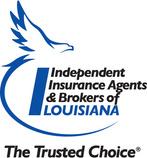

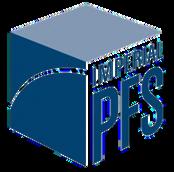














2 0 2 4 INDUSTRY PARTNERS G O L D L E V E L P A R T N E R S S I L V E R L E V E L P A R T N E R S B R O N Z E L E V E L P A R T N E R S P L A T I N U M L E V E L P A R T N E R Accentus Insurance Group AFCO Credit Corporation | BankDirect Capital AF Group Allied Trust Insurance Co. National General, an Allstate company Berkshire Hathaway GUARD Insurance Companies Commercial Sector Insurance Brokers EMC Insurance Companies FCCI Insurance Group Foremost Insurance Group Gulf States Insurance Company Hartford Financial Services Group Homebuilders SIF Iroquois South, Inc. Jencap Insurance Services Lane & Associates, Inc LUBA Workers’ Comp SafeCo/Liberty Mutual Wright Flood Updated 3/1/24
BOARD OF DIRECTORS & OFFICERS
PRESIDENT, ARMOND K. SCHWING PRESIDENT-ELECT, BRET HUGHES
SECRETARY-TREASURER, ROSS HENRY
NATIONAL DIRECTOR, JOHNNY BECKMANN, III
PAST PRESIDENT, MICHAEL SCRIBER
YOUNG AGENT REP, KRISTIN SWANSON SCOTT
Schwing Insurance Agency, Inc - New Iberia
Hughes Insurance Services, Inc - Gonzales
Henry Insurance Service, Inc. - Baton Rouge
Assured Partners - Metairie
Scriber Insurance - Ruston
Swanson & Associates - New Orleans

ANN BODKIN-SMITH
MATTHEW DEBLANC
CHRISTY DESOTO
DOMINIQUE DICARLO CROUCH
ROB W. EPPERS
MATT GRAHAM
CHRISTOPHER S. HAIK
STUART HARRIS
BEAU HEAROD
CHARLES H. LEBLANC
CRAIG MARTEL
LYDIA MCMORRIS
A. EUGENE MONTGOMERY, III
JOE KING MONTGOMERY
HARTWIG "ROBBY" MOSS, IV
ROBERT LOUIS PALMER, JR.
RANDY PERISE
ROBERT STONE
Thomson Smith & Leach Insurance Group - Lafayette
Continental Insurance Services - Marrero
1st Insurance of Marksville - Marksville
Riverlands Insurance Agency - LaPlace
Risk Services of Louisiana - Alexandria
Lincoln Agency - Ruston
Higginbotham Insurance - Lafayette
McClure, Bomar & Harris, LLC - Shreveport
Jeff Davis Insurance - Jennings
Bourg Insurance Agency, Inc - Donaldsonville
Insurance Unlimited of LA, LLC - Lake Charles
Alliant Insurance Services - Baton Rouge
Community Financial Insurance Center, LLC - Monroe
McGriff Insurance Services - Monroe
Hartwig Moss Insurance - New Orleans
Insurance Underwriters, Ltd - Metairie
Blumberg and Associates - Ponchatoula
Stone Insurance, Inc. - Metairie
LOUISIANAAGENT PAGE 29
IIABL 2023-2024








 JEFF ALBRIGHT IIABL CONSULTANT
JEFF ALBRIGHT IIABL CONSULTANT












 RACHEL STAUFFER HAWKSOFT CONTENT MANAGER
RACHEL STAUFFER HAWKSOFT CONTENT MANAGER







 MARTINA SEFEROVIC OIP CEO
MARTINA SEFEROVIC OIP CEO
























